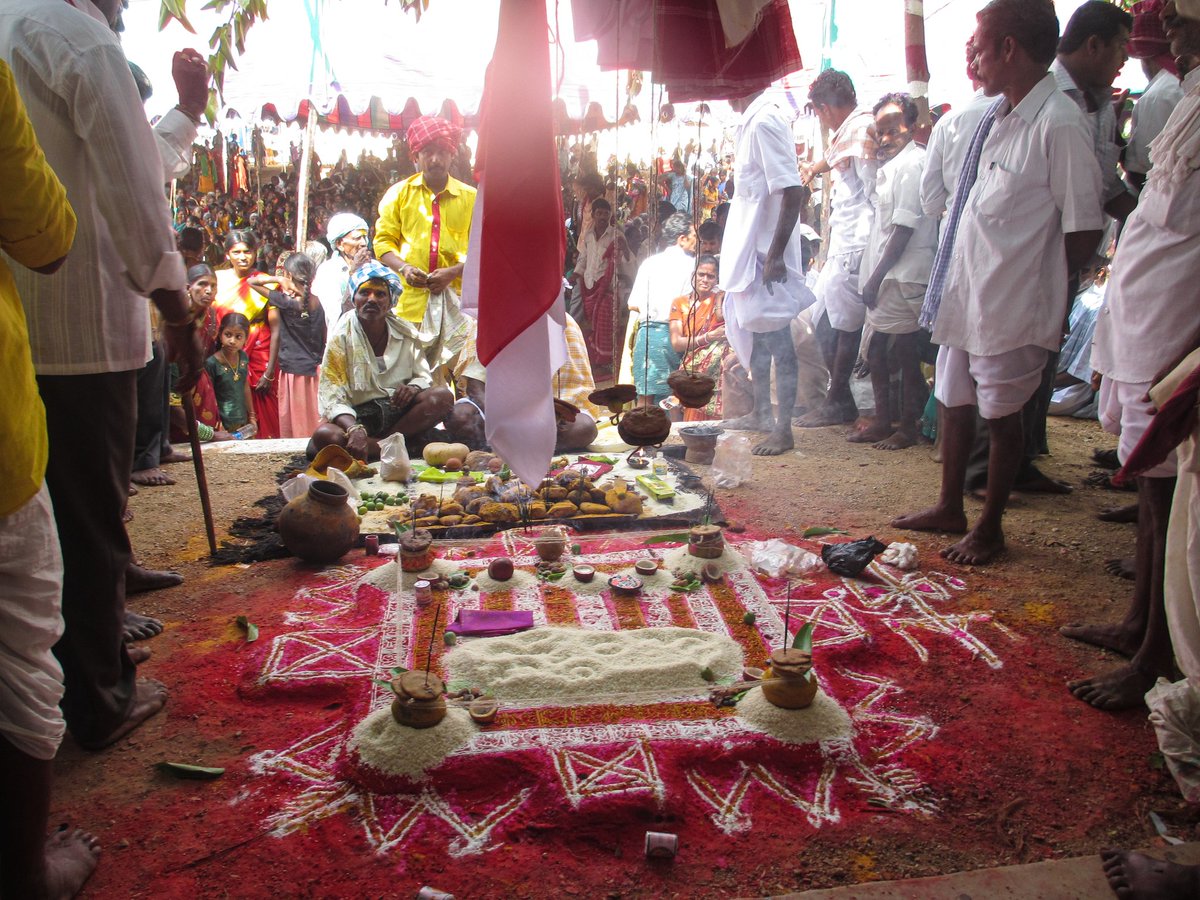I can see "Dollukintha" of Sanchara Kurubas, the one I come from. We Kurumas in Telanagana are no more Sanchara, has a little different version called "Oggu Katha" - the ballads of our god "Beerappa" (a form of Shiva).
@ReclaimTemples @punarutthana @LostTemple7 @hamsanandi
@ReclaimTemples @punarutthana @LostTemple7 @hamsanandi
https://twitter.com/asingh_b/status/1588901760068116480
In continuation to the above, Writing a thread on beautiful culture I am brought up in, the less known colorful "Kuruma" culture of Telangana.
Tagging for wider reach @ReclaimTemples @punarutthana @LostTemple7 @hamsanandi @ivak99 @veejaysai @asingh_b @Anviksiki @PankajSaxena84
Tagging for wider reach @ReclaimTemples @punarutthana @LostTemple7 @hamsanandi @ivak99 @veejaysai @asingh_b @Anviksiki @PankajSaxena84
1. Kurumas were nomadic tribes once grazing the "Sheep". Sheep is integral part of our lives. Our ancestors took the herds to forests of Nallamala crossing River Krishna and the pebbles they collected in their journey became our gods. Berappa, form of shiva is our chief God. 

2. By placing all our gods in a "Patham" (representing the mandala of universe) we perform the Kalyanam of our Beerappa once in 5 years. We sacrifice one sheep from each family requesting him to guard our sheep herds.
@ShefVaidya @anuradhagoyal
@ShefVaidya @anuradhagoyal

3. Unlike the cotton thread we use woollen thread in mangalasutra. Turmeric is our favorite. We smear ourselves with turmeric in every celebration. Its called "Bandaaru". Can spot me playing our sound "Dholu". Its daruvu (rythm) is called - "Dillem-Ballem". 

4. We offer a "Bonam" from every Kuruma home to Beerappa. They are protected by the possessed Ganas called "Pothurajulu" till they reach the temple. 

5. "Katkaalu" (fierce incantations) are part of the rituals playing dholu in the background. There are groups specialised in all these called "Beerlollu" (performers for Beerappa like purohitas). They guide the rituals & recite the 3 day long story of Beerappa called "Oggu Katha" 

6. The procession goes through village & we never miss this place in procession.
Surprising element - Stone visible here is the "Kalasa" of ransacked temple and our people did not forget its importance even to this day.
Surprising element - Stone visible here is the "Kalasa" of ransacked temple and our people did not forget its importance even to this day.

8. All Kurumas coming together to show their fraternity by spreading "Bandaaru" (Turmeric) on every one. Thus we finish our festival on this note. 

• • •
Missing some Tweet in this thread? You can try to
force a refresh







